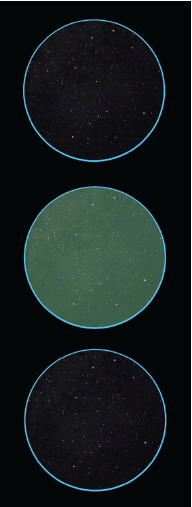One of the most electrifying experiences in visual observing is catching sight of something you don’t expect — and also can’t explain.
Many of us are familiar with unexpected events, like an exploding meteor or a vivid aurora. Although we cannot predict these events precisely, we can maximize our chances of seeing one by looking skyward when, say, there’s a meteor shower or solar storm. In time, constant vigilance will reward our efforts.
But what of the unexplained? Ah, here we have an uncommon beast that can lead to nights of research, speculation, and, in the end, head scratching. This happened to me the night of November 1, 2016.
A plasma flow?
In northern Botswana, November usually ushers in the rains, leading to a high probability of dramatic thunder and lightning storms over this country in southern Africa. These powerful events march across the flat and spartan landscape, tossing brilliant bolts and creating rolling waves of guttural thunder. Such conditions — when the storms are well in the distance and stars are visible in clear skies above the distant thunderheads — are excellent for observing sprites.
Sprites are luminous discharges that can occur above large thunderclouds, 30 to 60 miles (50 to 100 kilometers) high. They’re caused by atmospheric gravity waves that grow in the electric fields produced by lightning strikes. They can create bizarre naked-eye phenomena that look like giant ghostly carrots or jellyfish. The show is over in milliseconds, and it can leave you wondering if you need medical attention. I discussed the naked-eye view of these celestial flashcards in my June 2010 “Secret Sky” column. But what about the telescopic view?
On the evening of November 1, 2016, I went out with my 3-inch f/7 refractor and, using a magnification of 22x, swept the northeastern sky for galaxies. The horizon was lined with distant thunderheads, but my search took me over them to an altitude of about 25°. Amorphous sheets of distant lightning occasionally flashed, round outline. The “plasma” moved like a curl of smoke through air. The whole phenomenon was over in a breath, uniformly brightening the field of view. At one point, I decided to take a break and target the lightning itself through the telescope. After a few flashes, I saw a light phenomenon that amazed and perplexed me.
Telescopic imaging
Observers have been imaging sprites since 1989. Much research has focused on the downward tendrils of the carrot or jellyfish structures. But as early as 1996, Davis Sentman and colleagues at the Space, Telecommunications, and Radioscience Laboratory at Stanford University reported sprites with isolated patches (a few kilometers wide) that resemble plasma beads and balls. They also detected upward propagating explosions known as “fireworks structures.”
Did I witness a segment of these plasma fireworks or some other plasma feature visually through the telescope? In a 2015 issue of Nature Communications, Ningyu Liu of the Florida Institute of Technology, who researched sprites as gravity waves, noted that intense lightning could be causing dim glows in the upper atmosphere that are rarely detected.
Have you witnessed a strange or rare visual phenomenon associated with sprites? As always, let me know what you see, or don’t see, at sjomeara31@gmail.com.












